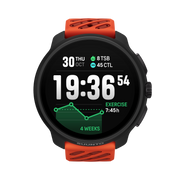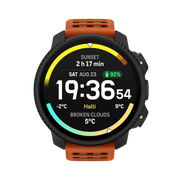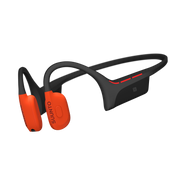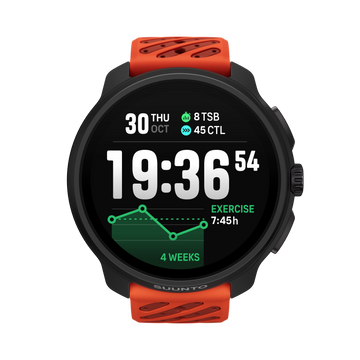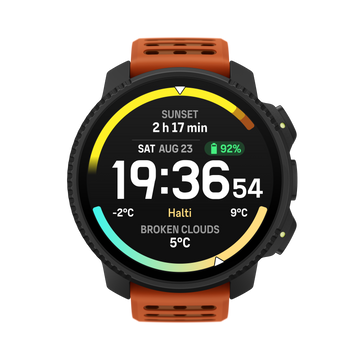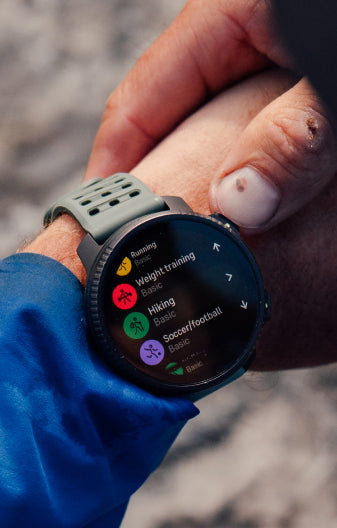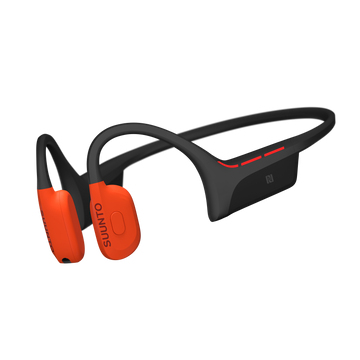

Suunto Blog

Meet the Mambo Brothers, two health conscious DJs living the nightlife
They travel the world playing at festivals and parties that go until the sun rises. They return home to Ibiza and party some more at their own venues, including the famous Café Mambo Ibiza. But don’t be fooled, Mambo Brothers Christian and Alan Anadon prize health and fitness as much as an epic night out partying.
They have been living and breathing electronic music since they were kids. EDM aristocrats, their parents were founders of the legendary Café Mambo Ibiza where some of the world’s biggest name DJs have come to play. Only boys, they watched and learned, fell in love with music and the ability of DJs to send a crowd wild.
Now they run the cafe, play at events across the globe, and produce their own music. In a new partnership with Suunto, the Mambo Brothers put together three playlists for Suunto users to enjoy on their next workout. The first playlist is ideal for recovery and chilling. The second playlist offers more get up and go. And the third playlist consists of tracks suited to an intense workout. We caught up with two brothers and asked them about sports, fitness and the DJ lifestyle – read on below.
With a view like that we can see why Christian likes to work out at home. © Mambo Brothers
Play your own favorite tunes from your wrist
With the Suunto 7 smartwatch you can connect your headphones to your phone and control music and other audio – adjust volume, pause and skip tracks – straight from your wrist without taking your phone out of your pocket.
You can also listen to music without your phone: Spotify has just released an update to their Wear OS app that enables offline use. Simply connect your bluetooth headphones with your watch and download the tracks that you want to take with you!
With this new feature, Spotify Premium users will be able to download their favorite albums, playlists, and podcasts to listen offline. Free users will be able to stream their tunes in Shuffle Mode using a WiFi or cellular connection, as well as download any of their favorite podcasts directly to the watch.
LEARN HOW TO USE SPOTIFY WITH YOUR SUUNTO 7
Running, the gym, hiking, dancing all night – what’s your sport?
As kids, we really enjoyed playing basketball on the weekends, but all that kind of thing got lost when we discovered the world’s best night clubs on Ibiza! Nowadays, we mostly go to the gym and work out there. We do 30 to 45 min runs on the treadmill and keep our heart rate over 140 to burn all that excess good life we have! Then we do compound exercises like deadlifts, squats with dumbbells, lumberjacks etc. Doing this helps us burn fat much faster.
Any outdoor adventure sports?
Sometimes we enjoy a good hike somewhere on the island, or while we are on tour we find a good track to walk. We also do a lot of deep sea diving. We love diving as it’s a gentle sport, and you have to be concentrated on your breathing and what you see in the water so it’s a very relaxing and a kind of therapy for us. It helps us to chill out.
Being a DJ is a nocturnal life right? How do you stay balanced and in shape?
For us it’s really difficult to find a routine because it’s so easily broken with all the travelling, playing at festivals, nightclubs, working at our venues in Ibiza. We have tried working with a personal trainer, which works very well during winter months, but when the night clubs in Ibiza open, and the summer tours start again, it’s a drastic change for us. We difficult to keep appointments because we never know what time we are going to call it a night. So this makes maintaining a routine difficult. It’s important for us to do some form of sport every day to get the positive vibes that exercise brings!
Alan overlooks Ibiza, an island famous for its electronic music. © Mambo Brothers
Has the DJ scene got healthier these days or is it still pretty wild?
It has got healthier for sure, and DJs are more conscious about wellbeing and feeling good in general. We are all very happy about that, but we are still playing with fire every night and try not to cross the line and break routines and good habits. For us, it’s very important to maintain good habits like training most days, plus sometimes adding a hike, a swim in the ocean, and eating healthy food! Keeping a balance and feeling fit is essential to handle our busy schedule.
What do you love about producing music and DJing at dance parties?
We love being DJs because it’s very social and we love making friends around the world that eventually visit us at Cafe Mambo during the summer. It makes us very happy being able to return their hospitality and have a few shots of good tequila with them! We have an amazing job; you get to travel, meet people, eat at great restaurants and of course dance! Producing our music is great – we get a buzz when a studio session goes well and we get a good track that you can play at a gig and see the crowd’s reaction. You can see how the track works and whether we are getting it right or if it needs some changes next time we’re in the studio! We feel blessed to be able to travel the world doing what we love most!
Tell me about your playlists and why you chose these tracks?
All the music has been tested on the treadmill and it works! We have never ran so much and enjoyed it so much! We have made a selection of classics, music that we love, and records that really motivate us! We hope you like it and enjoy as much as we do!
Lead image: Photo by Sebastian Coman Travel on Unsplash
Read more articles
The benefits of training to music and making your best playlist
4 indoor training tips for endurance athletes
How to adapt your training when the unexpected strikes
7 indoor training exercises to stay in shape

Finding the right coach and Suunto compatible training service for you
Michael Arend coaches ultra and marathon runners, as well as triathletes and ski mountaineers.
With much of the human population currently confined to their homes because of the coronavirus, our online connections have become vastly more important. Everything from meeting with friends and family, to yoga and exercise classes, and faith group meetings, all the way to dance parties have moved online.
For runners, triathletes and cyclists meeting a coach face-to-face is no longer allowed or advisable. But working with a coach online and managing your training via one of the many digital platforms now available can keep your training on track.
We talked to professional endurance coach Michael Arend, a former officer in the German Mountain Army, semi pro runner and host of Germany’s most popular running podcast, Fat Boys Run, and asked how to work with a coach online.
We also did a stocktake of all the awesome online coaching services Suunto partners with and have provided a list below. And check out the Suunto Value Pack to see the additional benefits provided to Suunto watch owners by these partners.
Find a a coach now
Michael says now is a good time to work with a coach because things are so uncertain and many of our plans are out the window. A good coach can help steady the ship and adapt your training so you still reach your goals.
“Some athletes need help to stay optimistic and to prepare for the races in autumn,” he says. “Others need creative suggestions on how to arrange the training. Working with a coach online can help with long term planning, macro planning and how to rearrange the goals. In times of uncertainty a coach can provide a lot of experience and I think that’s the greatest demand in this time.”
Here are his three tips for a successful coach-athlete relationship!
Trust is a must
It’s difficult to trust someone you’ve never met in person, right? Michael says this is the one con of working with a coach online. “Online coaching has a lot of pros, but one big con is establishing trust,” he says. “That’s the most important thing. Of course a coach has to know his or her physiology and science, and should have proven experience and the soft skills, but if the athlete is suspicious from the start on, it is hard to work together.”
The upshot? Make sure you choose a coach you definitely trust. That way you can let him or her lead the way without doubting or questioning his or her suggestions.
“Try to trust your coach at least for a few months,” Michael says. “Even if you think you know better, that’s rarely the case.”
Honesty first
For a coach to help you he or she needs to know where you are really at with your training and how things are going for you. Don’t hide where you are at from you coach. You’ll only cheat yourself.
“First of all, be honest,” Michael says. “Of course I cannot speak for every coach, but for my coaches I can definitely say that they all want to help the athlete inact in their dreams. There are a lot of topics which are not enjoyable to discuss, but your coach should know about your stress at home and about your digestion problems.”
Eye level and informed
You don’t want to have a coach who calls all the shots with little concern for your input, or a coach who gives into your whims and excuses.
“It has to be a relationship at eye level,” Michael says. “Your coach should be able to tell you the meaning and goals of your training and of every workout, without using stock standard phrases. He should use your experience and let you participate in his or her decisions. In addition to our regular conversations, we send an analysis video to our clients once a month in which we explain the progress and justify our decisions. That is very important.”
Photo by Curtis MacNewton on Unsplash
Digital training services and apps
You’re still looking for a coach and training service and now need to pick a service to help you hold and analyze your workouts? Read on – we’ve put together some options for you.
There are various online apps and services that you can use with your Suunto watch. Many of these help to match you with a coach and allow your coach to monitor your workouts and keep you on track. The services have different pricing models, and different benefits because some are focused on different sports. The Suunto Value Pack offers Suunto watch owners additional benefits and special deals.
Learn about the Suunto Value Pack benefits!
TrainingPeaks
TrainingPeaks is probably the most well known coaching platform for endurance training in the world, especially among the cyclists and triathletes. TrainingPeaks provides in-depth training analysis tools, the possibility to buy training programs and be connected with your coach via the platform.
It gives you analysis and overview tools with parameters, such as training stress score (TSS). If you don’t have a coach, there is a coach matching service where you can try to get a coach that fits your needs. Coaches can monitor several athletes via Trainingpeaks and also sell their training programs for athletes who don’t need one to one coaching.
Pricing:
Limited free versionPremium account: 9.92€/monthCoach’s account: basic, $19USD/month; unlimited, $49USD/month
Trainingpeaks here.
Today’s Plan
Today’s Plan is an online training and analytics platform suitable for coaches and athletes from beginners, self-trained enthusiasts or fully coached professional athletes. The platform has been gaining popularity in the cycling and triathlon communities.
The system includes a range of powerful online training tools that allows athletes to enjoy the quantifiable benefits of structured training. You can also choose to use the training plans generated by the platform.
Today’s Plan offers free tools for coaches. They can also create their own branded coaching site on the platform.
Pricing:
I train myself: 16.00€/monthI have a coach or structure my own training: 11.00€/month
More about Today’s Plan here.
PKRS.AI
PKRS.AI provides 24/7 coaching for its members. Built by Olympic Gold medalists, world champions and their coaches, PKRS.AI is the perfect marriage of A.I. technology with a human touch.
When you start using PKRS, you will be matched with a coaching team based on your preferences. PKRS then builds a personal training plan based on your goals and the time you have to train. There are real coaches that follow your training and your plan will adapt based on your actions. PRKS.AI also provides a video library for strength training as well daily stats from your lifestyle.
Pricing: 90€/month
More about PKRS.AI here.
Staminity
Staminity is a professional service for online training in cycling sports and most popular in Russia. It’s made for athletes, coaches and clubs. For athletes, Staminity helps to find a coach or get the best training plan to reach your goals. For coaches, Staminity provides the planning and analysis tools. For teams, Staminity provides coaching and athlete management. Staminity provides in-depth analysis tools, workouts summaries, training plans and templates, and the ability to manage other activities such as sickness or diet.
Pricing:
Athletes Basic: free. Premium: 5€/monthCoaches: 5€/monthClubs: 5€/month
More about Staminity here.
PWRlab
PWRlab is designed for runners and provides insights into how much training load they are getting from their daily workouts.
PRWlab provides coaches with the ability to monitor the runner’s resilience, and to identify if they are over or under training. This can be also used to determine if the athlete has a greater risk of injury. PWRlab uses easy to understand traffic lights to illustrate the risk of injury; this is based on training load and stride characteristics.
Pricing: $15.99USD/month
More about PWRlab here.
SportTracks
SportTracks is a complete solution for planning, tracking, analyzing, and sharing your workouts and other fitness performance data. It’s particularly popular among cyclists, runners and triathletes.
Coaches can use it for free as long as their clients have the unlimited version of SportTracks. They also have the option to pay a monthly fee and switch this between athletes. For example, a coach subscription for five athletes would cost $39USD/month.
Pricing: $59USD/year
More about SportsTracks here.
Coach4Pro
Coach4Pro is a customizable platform for coaches and well-being professionals. It’s designed to help coaches run their business, and can also be used with corporate wellness programs and to manage a team of athletes. For coaches the platform has training planner tools, integrated messaging between the coach and athlete, and content libraries to share with clients.
Pricing: The pricing is based on the number of athletes the coach is managing. Each athlete costs 0.33€/day+VAT so four athletes would cost 48€/month.
More about Coach4Pro here.
XHALE
Xhale is a specialized triathlon coaching platform. It’s training diary simplifies tracking, planning and connecting the training to the overall plan. It helps athletes to plan their week, stay consistent and build motivation. With Xhale you and your coach analyse workouts, create new splits, overlay and compare laps and sessions as you progress towards your training goals.
Pricing: The pricing is based on the number of athletes a coach has. For up to 10 athletes it costs 5.99€/ per athlete/month.
More about Xhale here.
RunningCoach
RunningCoach is an online training platform designed for runners. The toolset provides runners with a dynamic training plan and various parameters to calculate and shape your personal training plan. The platform also offers coaches to support you.
Pricing:
Freemium versionBronze: 10€/month; Silver: 15€/month; Gold: 69€/month
More about RunningCoach here.
Go-Heja
Go-Heja provides a full club and athlete management service. For clubs, Go-Heja provides athlete management system with sports, communication, payments and your own club store. For coaches Go-Heja provides planning, athlete training analysis, monitoring and direct communication tools. And for athletes the Go-Heja platform can be used with or without a coach for training planning and analysis.
Pricing:
$1.5USD per athlete, per month.
More about Go-Heja here.
To get connected with these services first register with the one below that fits your needs, and connect it with the Suunto app. Once you select Suunto, you will be asked to authorize the tool’s access to the data stored by your watch and Suunto App. Do this by giving the Suunto app your username and password. From then on all your workouts will automatically sync with your chosen coaching platform. You can connect to several tools and find your data in each one. Your data will also remain in Suunto App.
Read more articles
How to adapt your training when the unexpected strikes
Ultra champ Courtney Dauwalter's 6 tips for mental strength
4 indoor workout tips for endurance athletes
Adapting to life in a time of pandemic

Adapting to life in a time of pandemic
Across the world athletes and adventurers are being confined at home. This does not come naturally to us, but like skilful outdoors people who know how to handle any eventuality in the backcountry, this situation also presents us with an opportunity to adapt, grow, and learn.
That’s exactly what members of our Suunto community are doing. We reached out to a bunch of Suunto trail and ultra runners and asked how they are “making the best use of a bad bargain”. And it turns out there are some unexpected upsides
Johan in France uses his trainer to stay active.
Accept the disruption
Everyone we spoke to reported their goals for 2020 have been disrupted. Johan in Nice, France was looking forward to a cycling race and to hiking the famous GR20 trail across the spine of Corsica – the race has been cancelled and the hiking trip delayed. Joaquin in Spain is confined at home and all his plans have gone out the window.
“At first it took me a while to accept it, but after two weeks I am now quite well adapted,” Joaquin says. “I am aware that we have to overcome this together, and the best thing at the moment is social distancing and being confined at home so the virus doesn’t spread and affect more people worldwide.”
Take it one day at a time
The temptation for many of us at the moment is to worry about the future and to compulsively follow the news about each twist and turn in the battle against coronavirus. Giving in to this temptation saps us of energy and creates anxiety. Instead, it’s more helpful to relax and be in the moment.
Majo is living in Manila and is quarantined at home, and only permitted outside to pick up groceries and medical supplies. “Things may change in 24 hours so I’m just taking it one day at a time,” she says. “I’m trying to make myself productive and sane until we can come back to our ‘normal’ life. We can use this time to reflect on what’s important in life and how we will spend it well after all of these unexpected events.”
To pass the time, Joaquin follows a daily routine, including cooking and exercising. “We’re also playing a lot of old boardgames that I had forgotten about,” he says. “It is really is incredible to rediscover these and play them with my wife so the hours pass faster and our confinement is more enjoyable.”
Joaquin is using his balcony to good end!
Stay active
It’s important to acknowledge training indoors just isn’t the same as running in a forest or hills. Acknowledge, accept and then move on. All of our community is keeping active in one way or another. Fortunately for Tobias, he can still head out for runs in a nearby forest. Majo, on the other hand, is making the most of being confined indoors. “I’m doing strength and conditioning exercises such as high intensity bodyweight training or interval training with dumbbells, yoga and stair workouts for cardio,” she says. “I don't have much workout equipment so I’m making the most of what I have.”
Maja in Sweden is living in the countryside, which sounds idyllic, but actually involves a lot of work. "Our sheep will be having lambs any day,” she says. “We have 33 chickens waiting to crack out of their eggshells (9 days left now!), we need to take home and chop/stalk firewood for next winter, plant all the veggies we’re gonna grow this summer, do some renovations on and in the house. Plus, we have a one year old that doesn’t always want to do the things above!"
Learn new skills
Based in the German Alps, Tobias is using the downtime to create his own topographical maps for future climbing trips. Majo is doing an online course to prepare in case her country requires more health workers to respond to the pandemic. She’s also taking online cooking lessons. Johan has taken up meditation. “I decided to use this time to start things I’ve wanted to do or learn for years, but never had enough time for,” he says. “There are tons of websites which give free online stuff to learn new skills.”
Ryan has taken advantage of online communication technology to build community. “One new item that I implemented three weeks ago is a virtual group run/walk for my colleagues,” he says. “Every Thursday at 5:00 PM, I host a virtual group run where colleagues run/walk with me as I lead everyone through a workout. It is a fun way to get outside by yourself and meet new people!”
Fortunate to live in the German Alps, Tobias is still allowed outside to exercise.
Get inspired
Joaquin in Spain says for him it’s important to set and achieve a daily goal everyday. Ryan in California takes it a step further and says now is a time to set longer term goals, too. “This is a great time to set fitness goals!” he says. “Let’s use this time to consider what we want to accomplish in 2020 and 2021? Make clear, actionable, and attainable goals this year, and find a way to make yourself accountable. Share your goals with friends, workout buddies, or prospective coaches in order to help you stay accountable. Just because you can’t be in-person with someone right now does not mean you should lose your fitness accountability!”
To stay inspired, Joaquin also looks out for community initiatives to help out. “A good source of inspiration and motivation for the community are the multiple solidarity initiatives that exist, for example in Spain last Saturday there was an initiative to raise funds for COVID-19 research where more than 7,300 athletes ran in their homes and raised almost € 83,000,” he says.
Maja is staying inspired by following other athletes online. "A lot of athletes are doing live sessions and Q&As in social media channels so take the time to ask them questions, train with them and make plans for future adventures, " she says.
Look on the bright side
Every cloud has a silver lining, they say, and even though this pandemic is causing so much suffering it’s causing a few positive things, too. Humans evolved what scientists call “negativity bias”; the tendency to be more attuned to spotting problems and threats than seeing the positive. This helped our species survive when we were regularly under threat. Now, however, we can turn this around and learn to focus more on the positive.
“Even though my heart is really breaking seeing people and health workers get sick, die and starve because of this pandemic, a positive side of the quarantine for most parts of the world is less pollution and more healing time for the Earth,” Majo says. “Some families are spending more time together which is also priceless. We also get to realize we can live with less than the usual. Nevertheless, I am really hoping and praying desperately that this will end soon so we can get back to normal, whether that will be a new normal or not.”
Lead image: © AlpineFex
Read more articles
4 indoor workout tips for endurance athletes
How to adapt your training when the unexpected strikes
7 indoor training exercises to stay in shape
12 must-read running articles to boost performance

4 indoor workout tips for endurance athletes
Endurance athletes aren’t built for the indoors. Heading out, exploring new trails, hills, and rides, while pushing our limits, is what makes us tick. Training indoors does, however, allow us to work on some of the finer points of our game, things we can’t address out on rides, runs or in the pool.
This time of pandemic, when we are being asked to stay at home, gives us an opportunity to tune up our bodies in ways we usually don’t make time for in ordinary times. If we train smart at home, then when the restrictions life we will be 100% ready to dive into our outdoor training.
To give all you distance runners and triathletes confined indoors at the moment some inspiration, we talked to ultra runner Lucy Bartholomew, and triathletes Cody Beals and Mel Hauschildt about what they’re working on at home. They all had one thing in common: CORE WORK!
Face your core
There are no more excuses. “The time to lay that foundation and build a strong trunk has been forced on you!” Lucy says. “I love to do 15 to 30 minutes of core exercises, yoga and stretching and just more mat work and functional stuff. It doesn’t give you the sweat of a good run, but will certainly make that next run feel even more amazing.” Press play on the video above and join Lucy in one of her favorite core workouts!
Hit spin mode
If you have a training bike at home, put it on easy spin and pedal an hour or two away while watching your favourite Netflix series. “One of the sessions I do most often at home is an easy spin on the trainer while getting other work done,” Cody says. “I have my laptop in front of me and pass the time reading, researching, writing and emailing. I get some of my most focused work and creative thinking done on the trainer and the time flies!”
TRX and flex
Mel Hauschildt has a dedicated training room because working out there helps her to avoid distractions. She has a newborn baby, Dakota, who lies beside her while she, Mel, trains on her Kickr. “TRX cords are also very useful in working on endurance while stuck indoors,” Mel says. For inspiration, watch the video above, which shows how runners can use a TRX band.
Build power
Being confined indoors is no reason to stop training endurance fitness. Even if you don’t have a training bike or treadmill, there’s plenty you can do to build explosive power and maintain cardiovascular fitness. “You can do things like skipping outside, driveway sprints, jumping up stairs or DIY box jumps,” Lucy says. “Endurance is built for maintaining something for a longer duration of time so anything you do like star jumps, squats, burpees all build your cardio!” Need a challenge? Then press play above and join this skip rope endurance workout!
Read more articles
7 recover tips for immune fitness
How to adapt your training when the unexpected strikes
7 indoor training exercises to stay in shape

How to adapt your training when the unexpected strikes
After months of dedicated training and being focused on your goal, it’s difficult to accept and adapt when the unexpected occurs and turns everything upside down.
That’s the position many of us find ourselves in right now, with the COVID-19 pandemic causing massive disruptions to our normal way of life. Races are being cancelled, governments are asking us to follow social distancing measures, and even stay at home as much as possible.
There are also many other situations that can throw our training plans into turmoil; a family emergency, a natural disaster like a flood or hurricane, or an injury. Smart athletes know how to pivot and change things up when necessary.
Michael Arend coaches ultra and marathon runners, as well as triathletes and ski mountaineers.
Professional running coach Michael Arend says in the face of the unexpected, when your plans are torn asunder, it’s important to step back and ask yourself what will keep you motivated moving forward. “If you love your sport, you will find a new goal to keep you going,” he says.
We talked to Michael, a former officer in the German Mountain Army, semi pro runner and host of Germany’s most popular running podcast, Fat Boys Run, and asked how to adapt when our plans get dashed.
He gave us 8 tips on how to keep improving.
Keep going for it if ...
This comes with an important caveat; even if your goal has disappeared, you should continue peak training if your training data shows you are still making progress. If your average heart rate is decreasing over time on your long runs, or your pace is improving while your average heart rate remains the same, then this shows you are continuing to improve. When this progress stops or reverses, then it’s time to reduce your effort and allow more time for regeneration.
Box jumps build explosive power. Photo by Meghan Holmes on Unsplash
Use your peak
What goes up must come down … and this is true for peak fitness so Michael advises not to try and hold on to it. “Use your peak right now,” he says. “If your plan was to run a 10k race, but it was canceled, then run a Strava segment, or try for a treadmill personal best. Use your peak and say goodbye. Then look ahead and be positive, you will gain it again if you work hard.” If you try to stay at your peak you will end up overtraining and exhaust yourself. Use it and lose it.
Find a new goal
Many of the athletes Michael works with from his office in the south of Munich need a goal to stay motivated. Others are happy to just keep improving. If you’re the former type, then find yourself a new goal. Given the current global disruption, you might need to be creative. For example, Michael says a top German runner decided to run a 50k on his treadmill and ended up breaking the world record.
“Choose a goal, even if you don't know whether it will happen,” Michael says. “The main thing is it keeps you going.”
Have a Plan B
One of Michael’s clients is a top trail runner. Her goal is to perform well at a race that could be cancelled. If that’s the case, her Plan B is to attempt an FKT (fastest known time) on a trail that is a similar distance, terrain and elevation gain as the race.
“Have one goal for motivation, and one goal that will take place 100%,” Michael says. “Try to make the Plan B goal mirror the A goal.”
Photo by Chanan Greenblatt on Unsplash
Focus on your base, but only when ...
If your race has been cancelled and there isn’t another one coming soon, Michael recommends focusing on capacity training. He works with two training phases in his coaching; capacity and utility. The former is about building endurance, cardiovascular fitness, V02 Max and maximizing mitochondria to gain more energy.
Utility training is specialised according to the sport and the goal. “For example, runners who want to run a marathon a month or two away need to run a lot of mileage at a special pace, and try to reduce the fatigue at this pace,” Michael says. “This is an example of a specialisation.”
Right now if you don’t have a race, go back and concentrate on capacity training and you will continue to improve overall, and then you will be very well placed to specialise at a later date.”
However, a block of capacity training is at least eight weeks long, and better if it’s 12 or 16 weeks, Michael cautions. The body needs this amount of time to respond and adapt to training. If you only have four weeks, then capacity training doesn’t make sense.
Photo by Alora Griffiths on Unsplash
Build power and strength
If you don’t have at least eight weeks for a block of capacity training, then Michael advises to focus on power and strength training. “If you want to step back just for four weeks, it’s better to do some plyometric, core and strength training,” he says. “If the strength training is very hard, say four by four reps with heavy weights for example, then you will see improvements after three to five sessions. Plyometric training can include box jumps and skip rope to improve your explosiveness.”
Work on your weaknesses
“Most of the people I work with never usually train their weaknesses because there is always a race around the corner,” Michael says. “But right now they have the time. Distance runners, for example, usually don’t do their speed work. Now is a good time to do interval training.”
Another common weakness Michael sees is a lack of explosive power. “Especially in those who don’t have an athletic background,” he says. “They lack efficiency and ‘pop’ in their spring. This is because their tendons and muscles lack the stiffness to fire, to store power and then explode with it. They don’t train that.”
Chill with your family
If you usually spend 10 to 15 hours a week training, that’s time you aren’t with your family. While training is awesome for you, it can be hard on them. “Right now is a good time to spend time with your family and recharge your batteries,” Michael says. “Take care of your body and mind. Your training doesn’t have to fall apart because you reduce. It’s also a good time to take care of any injuries or niggles you might have had. Relax!”
Lead images: © Photo by Element5 Digital on Unsplash
Read more articles
7 indoor training exercises to stay in shape
Fulleing the engine: 6 principles of nutrition for athletes
7 recovery tips for immune fitness
7 principles to help you find the flow
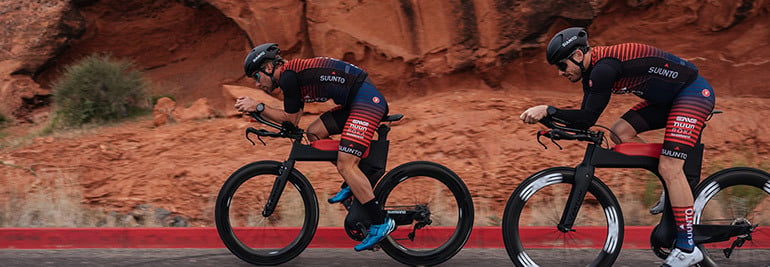
View TSS and other power-based cycling metrics in real-time
Together with TrainingPeaks we give you the tools and data to take command of your training. You track your workouts with your Suunto watch and TrainingPeaks gives you in-depth analysis and planning tools to achieve your full potential. After each activity, you can analyze your performance to determine where you are at. (Read more about benefits you get with Suunto & TrainingPeaks.)
On Suunto 9 and Suunto 5 watches you are also able to follow selected TrainingPeaks metrics in real-time. This lets you adjust the effort and duration of the exercise on the go, helping you reach your goal. TSS, IF and NP can be accessed in the SuuntoPlus section of Suunto 9 and Suunto 5 watches.
Read on to learn more about these metrics!
Normalized Power (NP)
In essence, Normalized Power is an estimate of the power that you could have maintained for the same physiological “cost” if your power output had been perfectly constant (e.g., as on a stationary cycle ergometer), rather than variable. Keeping track of normalized power is therefore a more accurate way of quantifying the actual intensity of training sessions, or even races.
For example, it is common for average power to be lower during criteriums than during equally-difficult road races, simply because of the time spent soft-pedaling or coasting through sharp turns during a criterium. Assuming that they are about the same duration, however, the normalized power for both types of events will generally be very similar, reflecting their equivalent intensity. In fact, normalized power during a hard ~1 hour long criterium or road race will often be similar to what a rider can average when pedaling continuously during flat 40k time trial – the normalized power from mass start races can therefore often be used to provide an initial estimate of a rider’s threshold power.
Intensity Factor (IF)
Although normalized power is a better measure of training intensity than average power, it does not take into account differences in fitness within or between individuals. TrainingPeaks therefore also calculates an Intensity Factor (IF) for every workout or time range analyzed. IF is simply the ratio of the normalized power as described above to your threshold power.
For example, if your normalized power for a long training ride done early in the year is 210 W and your threshold power at the time is 280 W, then the IF for that workout would be 0.75. However, if you did that same exact ride later in the year after your threshold power had risen to 300 W, then the IF would be lower, i.e., 0.70. IF therefore provides a valid and convenient way of comparing the relative intensity of a training session or race either within or between riders, taking into account changes or differences in threshold power.
In Suunto watches we use the threshold as limit between Zone 4 and Zone 5. This means that the effort you have been riding is a share from an-aerobic threshold level. Intensity factor gives you a simple info on how hard you are working out.
The intensity factor for recovery workouts should be under 0.75, for endurance rides 0.75-0.85, for tempo workouts 0.85-0.95 and for an-aerobic threshold intervals 0.95-1.05. The short timetrials I.e. 10km the intensity factor should be 1.05-1.15.
To get similar values with Suunto watch that you get from TrainingPeaks, make sure your Zone 4 | Zone 5 limit is same as functional threshold power in TrainingPeaks. You can find the zone setup on your watch settings: Training » Intensity zones » Advanced zones.
Training Stress Score (TSS)
Exercise intensity is clearly an important factor in determining the type and magnitude of physiological adaptations to training. Together, exercise frequency and duration determine the overall training volume are important factors as well. However, there is obviously an interaction between training intensity and volume. At some point as intensity goes up volume must come down, and vice-versa, or else you will become overtrained.
To quantify the overall training load and hopefully help avoid such a situation, TrainingPeaks uses your power data to calculate a Training Stress Score (TSS) for every workout, and provides a graphical summary of your recent TSS on your Athlete Home page.
Read more about Normalized Power, Intensity Factor and Training Stress Score at TrainingPeaks.com
READ MORE
Training with TSS and hrTSS
3 TrainingPeaks training metrics to adjust your running on the go
Lead image: Kevin Scott Batchelor
